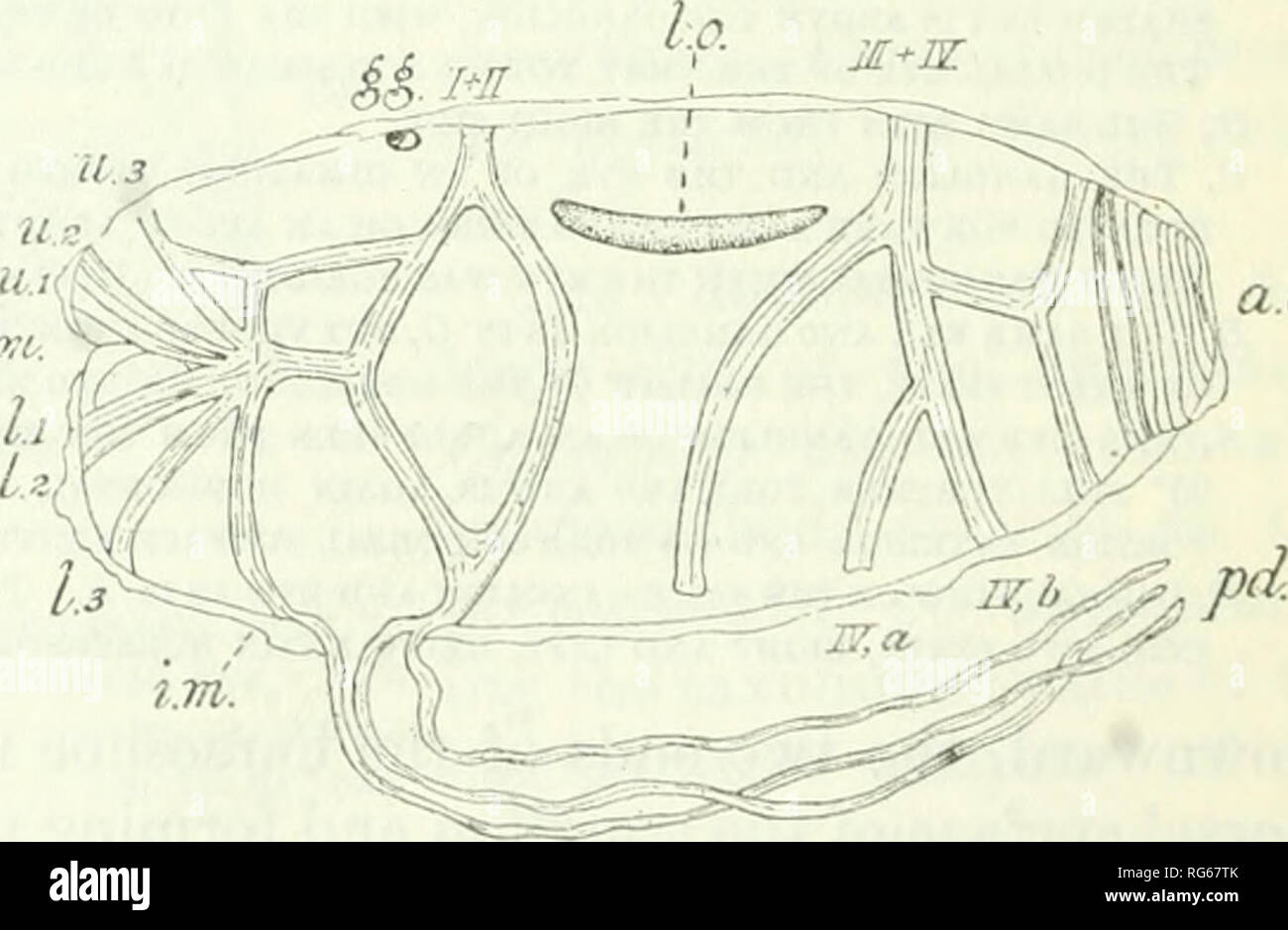. Bulletin - United States National Museum. Science. a.o. Fig. 13.—Cyclosalpa pinnata, SUBSPE- CIES POLAE, SOLITARY FORM, DORSAL view. From Sigl (1912, a). CYCLOSALPA PINNATA, subspecies POLAE (Sigl) (1912). Cyclosalpa polae Sigl (1912). This subspecies is said by Sigl to be dis- tinguished by two features: first, in the solitary individuals, the fusion of body muscles VI on the dorsal mid line and their continuance forward as a median muscle band reaching almost to the level of body muscles II (fig. 13); and, second, the long peduncle by which the aggre- gated zooids are united to form the wh

Image details
Contributor:
Book Worm / Alamy Stock PhotoImage ID:
RG67TKFile size:
7.1 MB (197.5 KB Compressed download)Releases:
Model - no | Property - noDo I need a release?Dimensions:
1955 x 1278 px | 33.1 x 21.6 cm | 13 x 8.5 inches | 150dpiMore information:
This image is a public domain image, which means either that copyright has expired in the image or the copyright holder has waived their copyright. Alamy charges you a fee for access to the high resolution copy of the image.
This image could have imperfections as it’s either historical or reportage.
. Bulletin - United States National Museum. Science. a.o. Fig. 13.—Cyclosalpa pinnata, SUBSPE- CIES POLAE, SOLITARY FORM, DORSAL view. From Sigl (1912, a). CYCLOSALPA PINNATA, subspecies POLAE (Sigl) (1912). Cyclosalpa polae Sigl (1912). This subspecies is said by Sigl to be dis- tinguished by two features: first, in the solitary individuals, the fusion of body muscles VI on the dorsal mid line and their continuance forward as a median muscle band reaching almost to the level of body muscles II (fig. 13); and, second, the long peduncle by which the aggre- gated zooids are united to form the wheel (fig. 14). In the collections of the United States National Museum submitted to us are three specimens of the solitary Cyclosalpa pinnata which are of the subspecies polae. One is 17 mm. long; one is 7 mm. long; the third is an embryo 8 mm. long, in which the placenta is present. None of them show any peculi- arity beyond the pres- ence of the median dorsal extension of body muscles VI. In the same bottle, and of course from the same place of collection, is fig another solitary indi- vidual 24 mm. long, of the usual pinnata character. There are also S aggregated zooids 14 mm. long, four of them still attached together in a broken wheol, and 2 aggregated zooids 11 mm. long, not attached. M+JZ a.c.. 14.—Cyclosalpa pinnata, subspecies polae, aggregated zooid viewed from the side. From Sigl (1912, a).. Please note that these images are extracted from scanned page images that may have been digitally enhanced for readability - coloration and appearance of these illustrations may not perfectly resemble the original work.. United States National Museum; Smithsonian Institution; United States. Dept. of the Interior. Washington : Smithsonian Institution Press, [etc. ]; for sale by the Supt. of Docs. , U. S. Govt Print. Off.